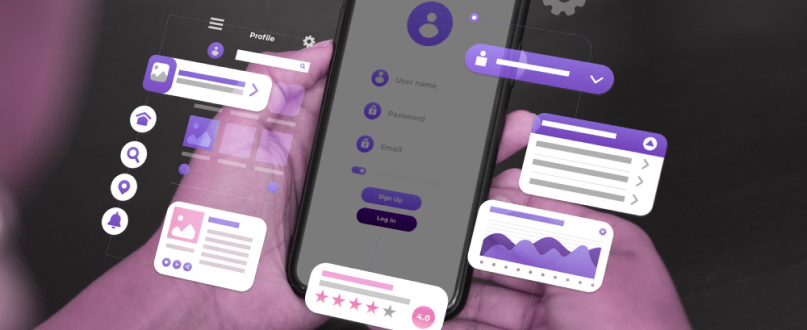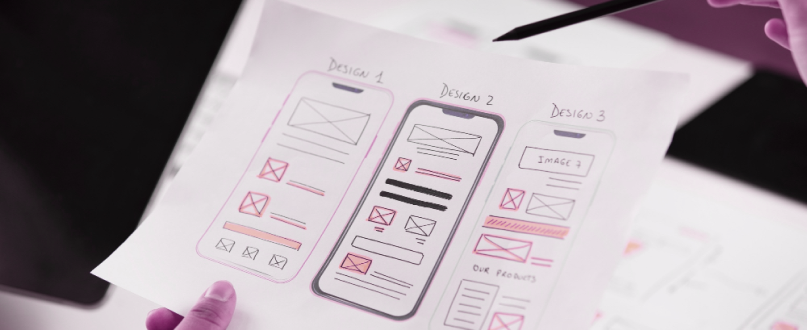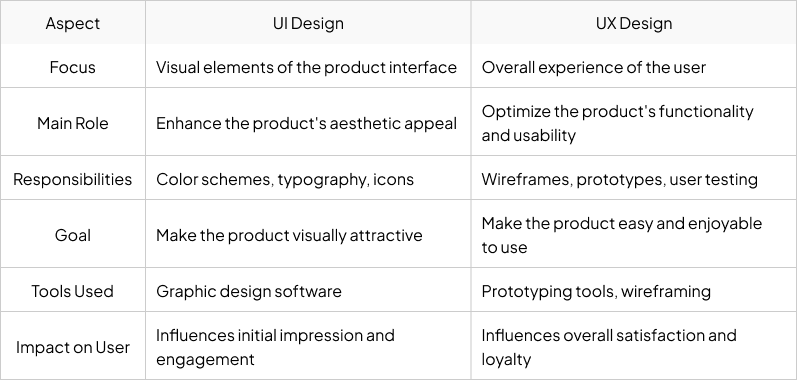In the digital design world, the terms "UI" (User Interface) and "UX" (User Experience) are often mentioned in tandem, but they represent very distinct aspects of the product development process and the design discipline. Understanding the difference between UI and UX is crucial for anyone involved in product development, from designers to project managers and beyond. This guide will help demystify these two essential components, clarifying how they interact and why both are critical to the success of any digital project.
What is User Interface (UI) Design?
User Interface (UI) Design focuses specifically on the look and layout of a product—how it's presented and how it interacts with users. UI design is concerned with all the visual and interactive elements of a product interface, including buttons, icons, spacing, typography, color schemes, and responsive design. The main goal of UI design is to visually guide the user through a product’s interface, enhancing the overall aesthetic without sacrificing usability.
UI Tasks and Responsibilities

UI designers play a crucial role in the development team. Their main tasks and responsibilities include:
1. Visual Design
Creating the graphical layout of software applications. This involves choosing color schemes, button shapes, and the design of all graphical elements.
2. Interactivity
Designing how users interact with the application's interface. This includes creating interactive elements such as buttons, sliders, and other tools that enable user actions.
Consistency
Ensuring the interface is consistent across the entire product, which enhances user experience and facilitates usability.
3. Prototyping
Developing wireframes and prototypes to test design ideas and iterate them based on testing results and feedback.
Collaboration
Working closely with UX designers and developers to ensure that the aesthetics meet the usability and functionality of the product.

What is User Experience (UX) Design?
User Experience (UX) Design, on the other hand, is all about the overall feel of the experience. It’s not just about how things look, but how they work. UX design encompasses the entire process of integrating a product, including aspects of branding, design, usability, and function. It is the job of the UX designer to make sure the user's experience with the product is as smooth and intuitive as possible—from navigating the interface to getting the desired response from the product.
UX Tasks and Responsibilities
UX designers are responsible for ensuring that the product logically flows from one step to the next. Some of their primary tasks include:
User Research
Conducting interviews and usability tests to gather feedback on the product’s effectiveness.
Persona Creation
Building user personas based on target audience research. This guides the design decisions by aligning the product with the user’s needs.
Information Architecture
Structuring and organizing information on the platform to optimize usability and navigability.
Wireframing and Prototyping
Creating wireframes that layout the skeletal structure of user interfaces and developing prototypes to demonstrate how the application will work.
Interaction Design
Designing interactive elements to make products simple and efficient for users.
Understanding Their Key Differences
While both UI and UX designs are integral to product development, they focus on distinctly different aspects of the user's interaction with a product. User Interface (UI) design is about the visual elements that users interact with on the screen. It deals with the aesthetics of the product, including the color scheme, button styles, typography, menu layout, and overall graphical placement. UI design ensures that the interface is visually stimulating and aligned with the brand’s visual identity.
User Experience (UX) design, on the other hand, encompasses the overall feel and ease of use of the product. UX design is concerned with the entire spectrum of the user’s interaction with the product. It aims to optimize the product so that it is functional and enjoyable from the user’s perspective. UX design involves extensive research to understand users' problems and needs, which guides the design process to make products intuitive and user-friendly.
The Relationship Between UI and UX
The relationship between UI and UX is symbiotic. UI design can be considered the bridge that helps users navigate from point A to point B, and UX design is the feeling they experience during that journey. An effective UI without a solid UX design is unlikely to succeed because the product might not be user-friendly. Conversely, a great UX with a poorly designed UI is also problematic as it may fail to entice or keep users engaged. Effective product design requires a seamless blend of both good UI and UX, making sure that visual elements and user pathways complement each other to enhance usability.

Importance of UI and UX in Product Development
UI and UX play critical roles in the lifecycle of a product. They directly impact customer satisfaction, brand reputation, and ultimately, business success. A strong UI design attracts users to the product, while a strong UX design retains them with positive interactions and satisfaction. These elements also affect key performance indicators such as user engagement, conversion rates, bounce rates, and customer retention. Investing in both UI and UX is essential because it leads to a more loyal customer base and a significant competitive advantage in the market.
Achieving Balance Between UI and UX
Achieving a balance between UI and UX is critical for the success of any digital product. This balance means that the product is not only aesthetically pleasing but also functional and easy to use. Designers and developers need to work collaboratively from the onset of a project to ensure that both UI and UX are considered at every stage of the development process. This involves continuous testing and feedback, iterating designs, and aligning both the visual and functional elements with the user's needs and expectations.
Branding Conclusion: Flyers Soft
At Flyers Soft, we pride ourselves on delivering exceptional digital solutions that embody perfect harmony between UI and UX design. Our approach ensures that every product is not only beautiful to look at but also delightful to use, providing an optimal balance that drives user satisfaction and business success. By focusing on both aesthetic appeal and user-centric design, Flyers Soft continues to lead as an innovator in the software industry, helping businesses achieve their digital goals through superior design and strategic user experience enhancements.
Discover how partnering with Flyers Soft can transform your digital products by leveraging the integrated power of UI and UX design. Explore our UI and UX design services today and take the first step towards a more engaging and successful digital presence




